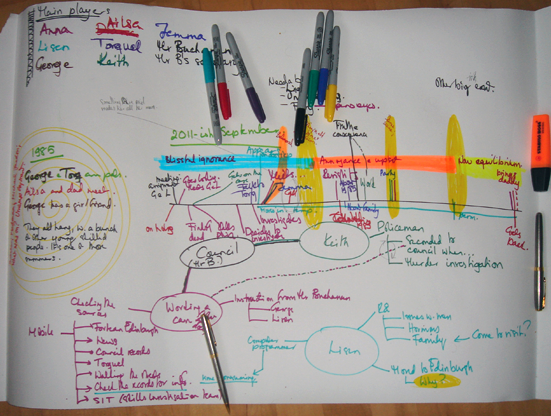As part of the Edinburgh International Book Festival, Edinburgh City of Literature arranged for writers to meet with industry experts – an agent, a publisher, a creative writing coach, a publicist and an Edinburgh literary expert. We got 15 minutes with our chosen expert on a sunny Sunday morning. My expert was Francis Bickmore, Editorial Director at Canongate Books, a well-known Edinburgh publishing house. Francis is an experienced editor and has worked with Nick Cave, Yann Martell and other big names. I’d sent him a 500 word writing sample, a writer’s CV and questions. I also sent him some background: my questions were about making writing into a career. Here’s what I learned:
- Write, speak and network. Do what you can to get seen.
- Apply for everything you can to get the time and space to write and get your name out there.
- Finish a book before even thinking about contacting agents or publishers.
- Get an agent.
- Make friends with other writers, especially established ones writing in your genre. They’ll give you access to publishers and agents.
- Surround yourself with writers. You’ll need the support.
- Don’t give up the day-job.
I also asked about the size of their slush-pile and how many new writers they take on. The figures were scary and illustrated how important an agent is. They are the first level of quality control. They are your way in, but also a publisher’s way to filter out a lot of the chaff.
It was an encouraging experience. I know that I’m doing the right things, but have realised that it might take a bit longer to get where I wanted to be than I thought. Never mind. Step the first is to finish my first novel. Bring on September.
